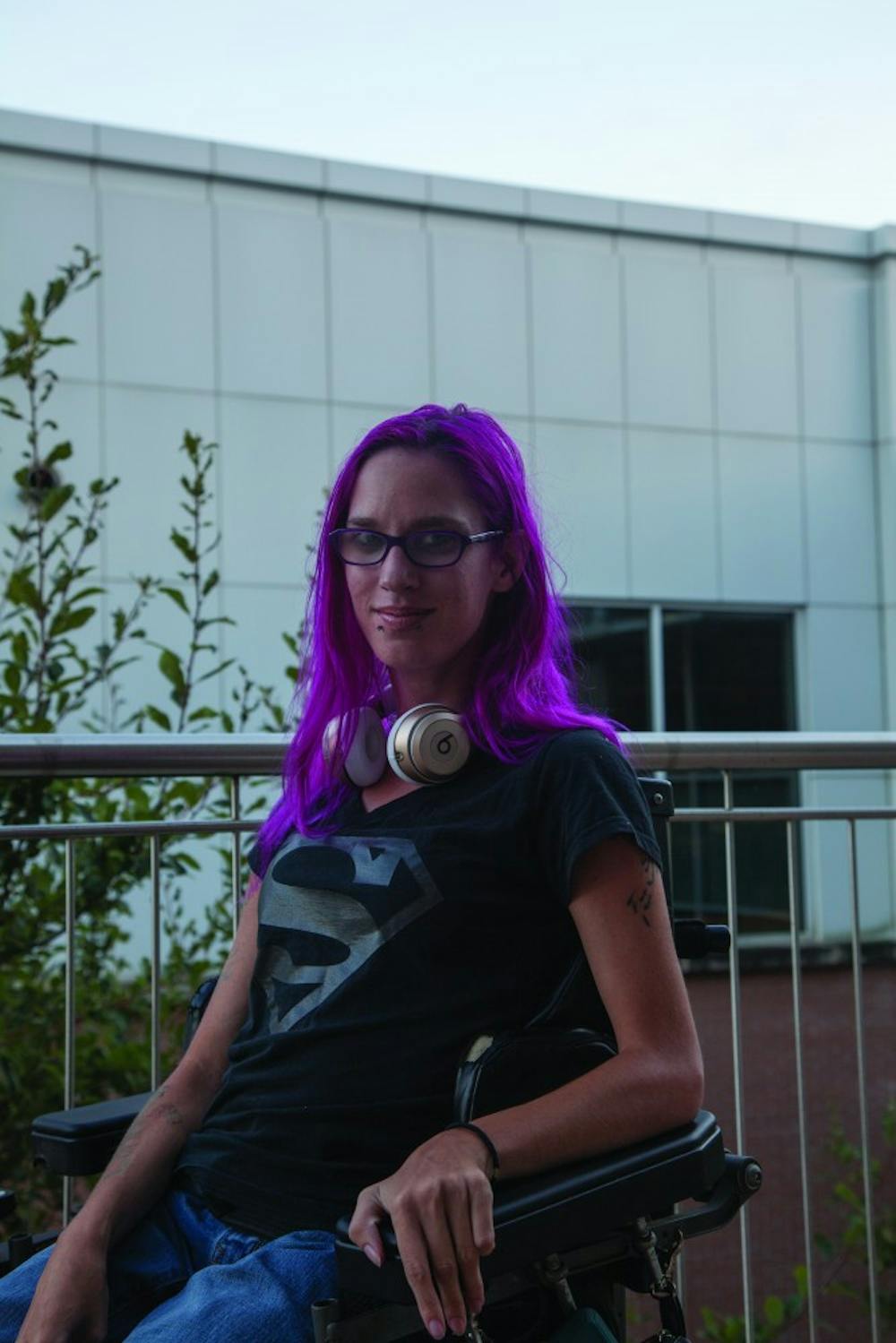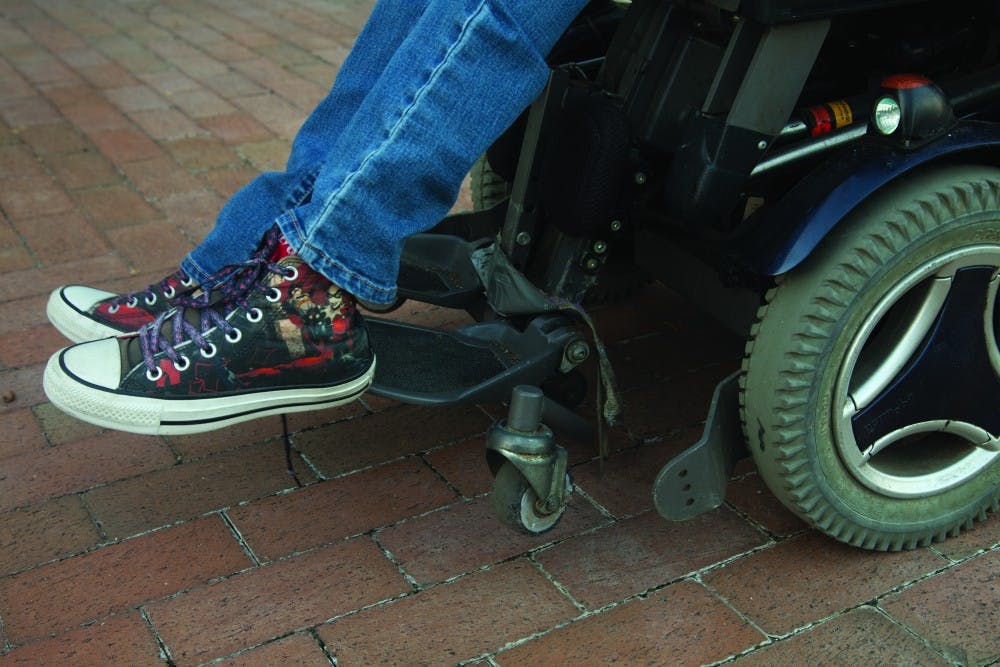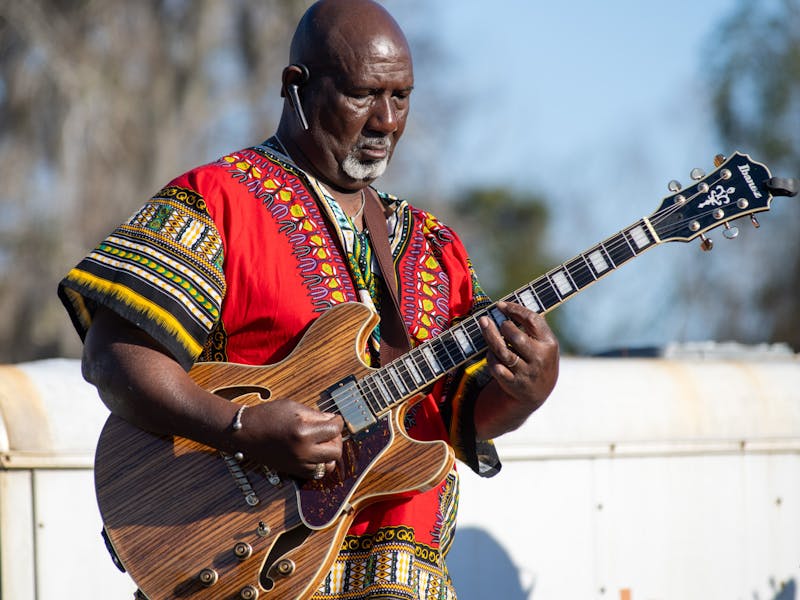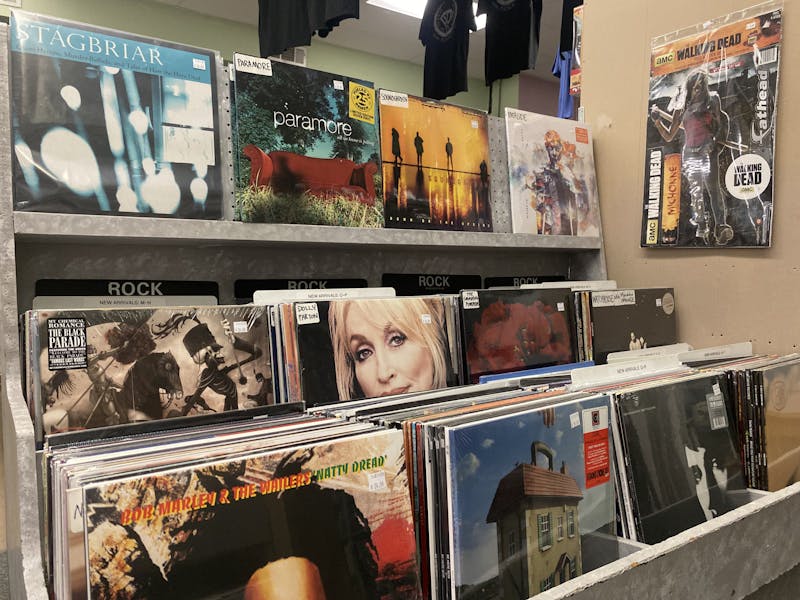Picture this: it’s the day of your final exam. You anxiously walk to the Humanities building to get to your class, only to find that both elevators are broken. You’ll probably groan to yourself and head to the dreaded staircase. But then you find that the doors to both staircases are locked. Your exam starts in ten minutes and nobody is around to unlock the doors. What do you do?
This isn’t the start of a riddle. If you’re a teacher’s pet like me, this probably sounds like the stuff of nightmares. But to Brianna (Bri) Ash and many other students on campus, these barriers are a reality.
Ash is a senior psychology major and social work minor at USC and a self-proclaimed “military brat” who went to high school in Jacksonville, North Carolina, but is used to making any place her home. Ash was born with Cerebral Palsy (CP), a disorder that damaged her brain and makes certain movements difficult or impossible. CP looks different for every person who has it, but for Ash, it means that she has been and will be in a wheelchair her whole life.
For the majority of students on campus, USC’s hills, staircases and broken elevators are something to groan and complain to your friends about. But for people with disabilities, these inconveniences are real restrictions to their education.
“USC is not the worst place that I’ve been as far as accessibility – they’re not the best – but they’re not the absolute worst that I’ve dealt with, either. There are places that I wish they would fix, but I realize that means shelling out money that the university does not have to spend or does not want to spend,” Ash explained.

“The biggest issue that I have is they have so many older buildings that they don’t bother to update at all. Like if you’ve been in the Calcott building and you’ve seen how tiny that elevator is... my wheelchair barely fits in there." Ash said. "And I am not the only person in a wheelchair on this campus. I am one of the few, but I am not the only one. So if I’m having that issue, it’s definitely not just me. And that’s in a lot of the buildings around here.”
Ash's main source of university assistance is through the Student Disability Resource Center. The center serves students who have a documented disability (both physical and mental, internal and external) that affects their major life functions and students who have temporary injuries.
The types of accommodations that they provide vary on a case-by-case basis, because the needs of their students are so different, but some common examples of their accommodations include extended time on tests and test proctoring, audio recording, preferential seating, allowing laptops for note-taking, note-takers and alternative format books.
For students with injuries and/or in wheelchairs, they offer adaptive transportation, which is run by the same people who run the university shuttles. Adaptive transportation is based on student’s individual schedules, and it picks up and drops off students as close to their buildings and locations as possible. It only runs on campus, but they work with students to find the closest pickup location.
However, some issues that arise are difficult for the disability resource center to address. Take, for example, the issue of elevators being broken. If a student contacts their disability coordinator about this, there isn’t much they can do in the moment, other than advise them to contact maintenance. This is why the center encourages self-advocacy among their students, who often have to take matters into their own hands.
“I actually, during the summer, got locked out of one of my finals, almost, because the back door to the building where the ramp is was locked,” Ash said. “The other doors that were in front of stairs were not locked. I emailed my teacher and said, ‘This is what’s happening, I’m stuck, can you please come let me in?’ And she immediately emailed me back and was like ‘I’m coming,’ and she was like, ‘I didn’t even think about that door.’ And that’s an issue.”
Another example of outdated and inaccessible buildings that may create problems is the Humanities Classroom Building, where one or both of the elevators are often broken. So when both of the elevators are broken, and you’re in a wheelchair, what do you do? You have no choice but to miss class.
Even when the university does offer accommodations for accessibility, it is often still not easily accessible.
“The other problem is finding ramps, because they like to hide them around the backs of buildings, and you have to email your disability coordinator most of the time and be like, ‘Hey, where is it?’ Because nine times out of the ten, the teachers have no clue. No idea. Because they don’t have to use them, so why do they care where they are?” Ash said.
Ash did emphasize, however, that one of the best things about this campus is the overwhelming majority of teachers who are willing and eager to accommodate their students with disabilities.
“If a teacher knows there’s an issue, they’re gonna do their best to take that weight off you, because they know that the university isn’t going to be quick about fixing it unless they do something too,” Ash said.
She also acknowledges that the weight of this issue cannot fall squarely on the teacher’s backs, as they juggle busy schedules and many responsibilities.
“I think honestly it’s not on the teachers, because they deal with so many students day in and day out, it’s just too much to juggle to also worry about 'Where are the ramps? Can everybody get to them? Is there accessible seating?'” Ash said. “I think it’s more on the university to focus more on the people like me. Because, I mean, there’s not many of us, but there’s enough of us to where it’s an issue. And they don’t do a lot to update their accessibility. They just don’t. Once they build a building, they’re like ‘Okay, it’s cool. It’s up. Good luck.’”
Since buildings are left the way they were long before cell phones existed, students like Ash are pushed further into the margins, with more barriers in front of their education.
USC’s Director of Public Relations, Jeff Stensland, said in an email, “USC’s Students Disability Resource Center works diligently to ensure our campus maintains a safe and accessible environment for those with disabilities. Since USC is a historic campus situated in an urban setting, we are sometimes faced with challenges, but the Center coordinates with faculty, staff, students and advocacy groups to address concerns and work toward common solutions.”
While it’s easy to talk problems, it’s often harder to come up with common solutions. Some buildings – such as the Discovery Building -- have good examples of innovative, accessible solutions according to Robbie Kopp, the director of advocacy and community access at Able SC. One of the first steps in making accessibility improvements is making sure that students like Ash are thought about and consulted when making campus decisions.
Organizations such as Able South Carolina, a statewide non-profit that seeks to empower and advocate for the disabled community, are often called in to consult and train employees for governmental organizations and businesses to make sure their work policies are accommodating to those with disabilities. Kopp said that departments or professors at USC will often ask for the organization to present to their classes, but that they don’t work closely with the university as a whole.
“I wish they would really look at campus and start making changes to the already accessible options that they have,” Ash said.
Bringing in diverse community voices brings forth diverse and inclusive solutions. It’s something that that requires being mindful and intentional.
“Accessibility isn’t something that will just happen, magically,” Kopp said. “It’s something that you have to plan.”
And for students like Ash, their demands are simple: listen and pay attention.
“If you could just make it a little bit easier by paying attention, that’s all we want, really, is somebody to pay attention and to listen when we complain about things like this,” Ash said. “Because we’re not just complaining to complain. If we’re complaining, there’s a real issue.”



